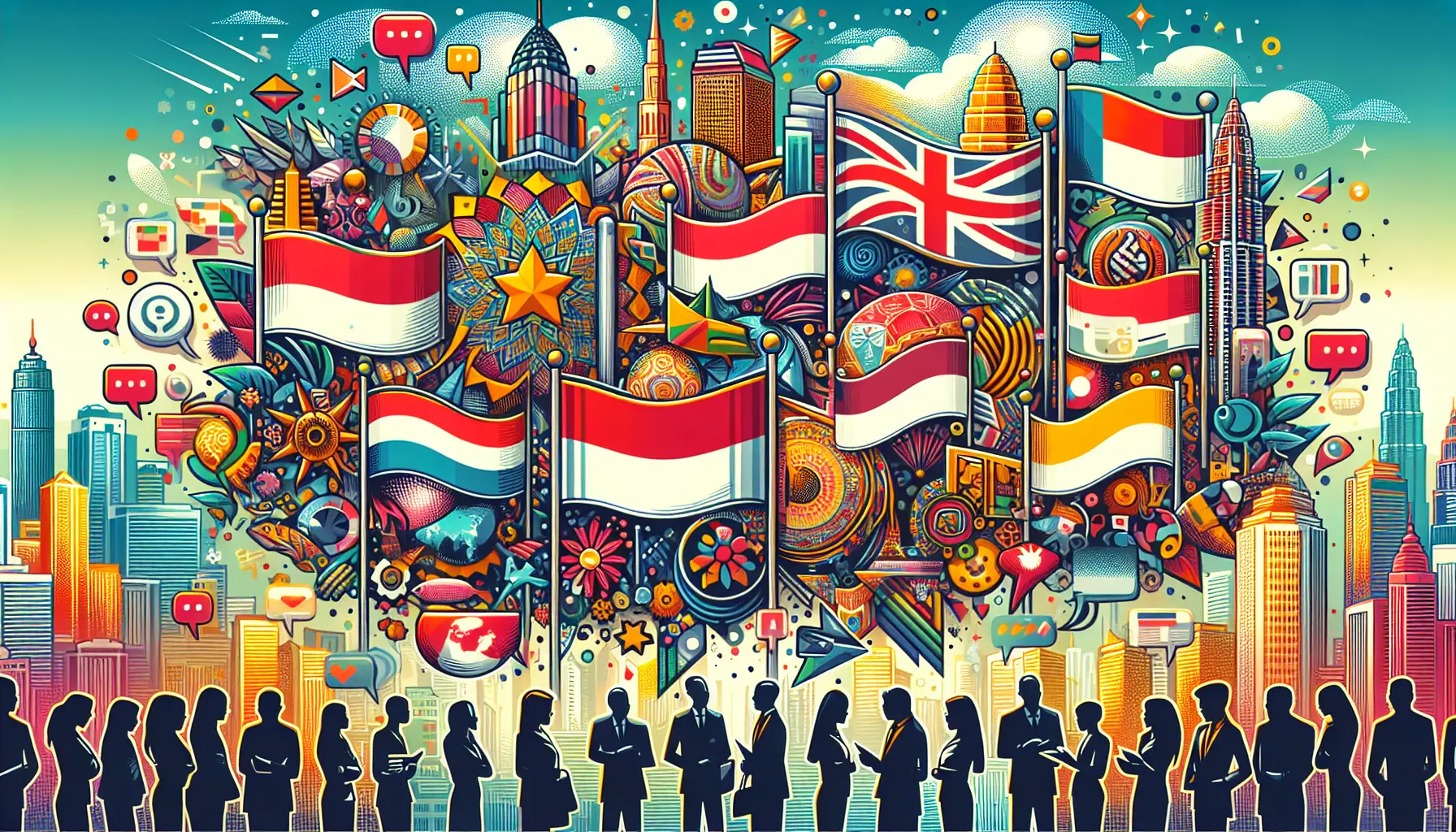The intersection of artificial intelligence and electoral processes has emerged as one of the most significant challenges to democratic governance in the 21st century. As AI technologies advance rapidly, their potential for geopolitical interference in elections worldwide has created unprecedented risks to electoral integrity, voter trust, and international stability. The 2024 global election cycle, affecting 3.7 billion eligible voters across 72 countries, served as the first major test of how AI-powered tools could be weaponized for political manipulation and foreign interference, revealing both the immediate threats and long-term implications for democratic institutions.
The Evolution of AI-Powered Election Interference
Artificial intelligence has fundamentally transformed the landscape of election interference by democratizing the creation of sophisticated disinformation content. Traditional influence operations required significant resources, technical expertise, and coordination typically available only to state actors or well-funded organizations. AI tools have lowered these barriers dramatically, enabling anyone with basic technical skills and minimal financial resources to produce convincing deepfakes, generate targeted propaganda, and conduct large-scale influence campaigns.
Professor Ethan Mollick at the University of Pennsylvania’s Wharton School demonstrated this accessibility by creating a deepfake video of himself in just eight minutes at a cost of only $11, using publicly available apps. This dramatic reduction in cost and complexity means that influence operations no longer require “the resources of a state-sponsored troll farm” to be effective.
The sophistication of AI-generated content has reached a threshold where distinguishing authentic from artificial material requires specialized knowledge and tools. Deepfake technology can now produce convincing video, audio, and text content that mimics real political figures, creating opportunities for foreign actors to manipulate electoral processes without detection.
Geopolitical Actors and Strategic Motivations
Foreign interference in elections through AI represents a new form of asymmetric warfare, allowing less powerful nations to influence stronger adversaries’ domestic politics without direct military confrontation. State actors can use AI tools to amplify existing social divisions, promote preferred candidates, undermine electoral legitimacy, and create long-term instability in target countries.
Russian intelligence services specifically aimed to use AI to influence U.S. elections, spreading baseless allegations of voter fraud in battleground states and distributing fake images of world leaders such as Ukrainian President Volodymyr Zelensky urging people to vote for specific candidates. These operations demonstrate how AI enables foreign actors to create highly targeted content that exploits specific political vulnerabilities and cultural sensitivities.
The strategic value of AI-powered election interference extends beyond immediate electoral outcomes to include broader geopolitical objectives such as weakening democratic institutions, reducing international cooperation, and creating domestic instability that limits a target nation’s ability to project power internationally.
Deepfakes and Disinformation Campaigns
Deepfake technology represents the most visible and concerning application of AI in election interference. These AI-generated videos, audio recordings, and images can convincingly portray political candidates saying or doing things they never actually did, creating powerful tools for character assassination and voter manipulation.
The 2024 election cycle witnessed several significant deepfake incidents, including robocalls featuring a faked version of President Biden’s voice urging New Hampshire voters not to participate in the primary election. While the perpetrator was fined $6 million by the Federal Communications Commission, the incident demonstrated the potential for last-minute deepfake attacks that leave insufficient time for fact-checking or debunking.
International examples further illustrate the global scope of this threat. In Slovakia, faked audio seemingly showing a candidate discussing vote rigging and raising beer costs spread online just days before the election, potentially influencing the outcome in favor of a pro-Russian politician. Such incidents reveal how AI-generated content can be strategically timed to maximize impact while minimizing opportunities for effective response.
The scale of deepfake proliferation has grown exponentially, with fraud specialists reporting a 3000% increase in deepfake attempts in 2023. This explosion in AI-generated content creates new avenues for voter manipulation and makes comprehensive detection and prevention increasingly challenging.
AI-Amplified Information Warfare
Beyond deepfakes, AI enables sophisticated information warfare campaigns that can operate at unprecedented scale and precision. Machine learning algorithms can analyze vast amounts of data to identify vulnerable voter demographics, craft personalized propaganda messages, and optimize distribution strategies for maximum impact.
AI can create millions of “malicious brainwashing messages” that can be disseminated across social media platforms, overwhelming traditional fact-checking mechanisms and creating information environments where truth becomes increasingly difficult to discern. These automated systems can generate content faster than human moderators can review it, creating persistent challenges for platform governance and content moderation.
The personalization capabilities of AI allow foreign actors to tailor disinformation campaigns to specific cultural, linguistic, and political contexts, making their interference more effective and harder to detect. This micro-targeting approach enables attackers to exploit local grievances, amplify existing tensions, and create highly credible-seeming content that resonates with specific communities.
Platform Vulnerabilities and Detection Challenges
Social media platforms face enormous challenges in detecting and preventing AI-generated interference while balancing free speech concerns and avoiding over-censorship. The rapid evolution of AI technology means that detection systems constantly lag behind generation capabilities, creating windows of vulnerability that bad actors can exploit.
Despite market leader OpenAI’s emphasis on banning political uses and its use of AI to automatically reject a quarter-million requests to generate images of political candidates, the company’s enforcement has been ineffective and actual use remains widespread. This enforcement gap highlights the difficulty of controlling AI misuse even when companies implement explicit policies.
The volume of content generated by AI systems overwhelms traditional human moderation approaches, requiring automated detection systems that themselves rely on AI. This creates an arms race between generation and detection technologies, with attackers constantly adapting their methods to evade countermeasures.
Platform policies often struggle to address the nuanced nature of AI-generated political content. Meta’s oversight board criticized the company’s policy as “incoherent” and containing major loopholes, noting that it “bans altered videos that show people saying things they do not say, but does not prohibit posts depicting an individual doing something they did not do” and “does not cover audio fakes, which are one of the most potent forms of electoral disinformation”.
The Liar’s Dividend and Trust Erosion
One of the most insidious effects of AI-powered election interference is the creation of what researchers call the “liar’s dividend” – the ability for any actor to dismiss authentic evidence by claiming it might be AI-generated. As the public becomes more aware that video and audio can be convincingly faked, some try to escape accountability for their actions by denouncing authentic audio and video as deepfakes.
This phenomenon fundamentally undermines the shared epistemological foundation necessary for democratic discourse. When voters cannot distinguish between authentic and artificial content, the entire information ecosystem becomes unreliable, making informed democratic participation increasingly difficult.
AI seems to have done less to shape how people voted and far more to erode their faith in reality. This erosion of trust extends beyond specific election cycles to create long-term damage to democratic institutions and processes. The misuse of AI tools is eroding public trust in elections by making it harder to distinguish fact from fiction, intensifying polarization, and undermining confidence in democratic institutions.
International Responses and Regulatory Frameworks
The global nature of AI-powered election interference has prompted various national and international responses, though coordination remains limited and enforcement mechanisms are often inadequate. Lawmakers in 20 states passed new restrictions on the use of AI in deceptive election communications during the 2024 cycle, demonstrating growing recognition of the threat.
However, the transnational character of AI-powered interference makes purely domestic responses insufficient. Foreign actors can operate from jurisdictions with limited cooperation agreements, use distributed infrastructure to obscure their origins, and exploit regulatory gaps between different national frameworks.
International cooperation on AI governance remains fragmented, with different countries pursuing divergent approaches to regulation, platform accountability, and content moderation. This patchwork of responses creates opportunities for sophisticated attackers to exploit regulatory arbitrage and avoid accountability.
Technological Countermeasures and Their Limitations
Various technological solutions have emerged to combat AI-generated interference, including detection algorithms, content authentication systems, and blockchain-based verification methods. However, these countermeasures face significant limitations in their ability to keep pace with advancing generation technologies.
Detection systems often struggle with the rapid evolution of AI capabilities, requiring constant updates and retraining as attackers develop new techniques. The computational resources required for real-time detection at social media scale create practical limitations on deployment and effectiveness.
Content authentication approaches, such as digital watermarking and cryptographic signatures, show promise but face adoption challenges across diverse platform ecosystems. These solutions also depend on voluntary implementation by content creators and platforms, limiting their effectiveness against bad actors who have no incentive to participate.
Long-term Implications for Democratic Governance
The integration of AI into election interference represents a fundamental shift in the threat landscape for democratic institutions. Unlike traditional propaganda or disinformation campaigns, AI-powered interference can operate continuously, adapt in real-time to countermeasures, and scale to target multiple elections simultaneously across different countries.
The long-term consequences of AI-driven disinformation go beyond eroding trust — they create a landscape where truth itself becomes contested. This epistemic crisis threatens the foundational assumptions of democratic governance, which depend on informed public deliberation and shared factual understanding.
The democratization of sophisticated propaganda tools may lead to an environment where every political actor, from individual candidates to foreign governments, can engage in AI-powered influence operations. This proliferation could transform election interference from an exceptional threat into a routine aspect of political competition.
Strategic Mitigation and Future Preparedness
Addressing AI-powered election interference requires comprehensive strategies that combine technological, regulatory, and educational approaches. Social media platforms, AI developers, and policymakers must act now to implement transparency requirements, strengthen trust and safety protections, and establish accountability mechanisms for AI-generated content.
International cooperation mechanisms need substantial strengthening to address the transnational nature of AI-powered interference. This includes developing shared detection capabilities, coordinating response strategies, and establishing diplomatic frameworks for addressing state-sponsored AI influence operations.
Public education and media literacy programs must evolve to help citizens navigate an information environment increasingly populated by AI-generated content. Building social norms around AI use, similar to how spam email is now widely recognized and dismissed, could help reduce the effectiveness of AI-powered manipulation.
Conclusion: Securing Democracy in the AI Era
The 2024 global election cycle demonstrated that while the most catastrophic scenarios of AI-powered electoral disruption did not materialize, the fundamental threats to democratic governance are real and growing. There remains no evidence AI has impacted the result of an election, but experts remain concerned about the persistent erosion of confidence in what is real and what is fake across online spaces.
The challenge of AI-powered geopolitical interference in elections extends beyond technical solutions to encompass fundamental questions about information integrity, democratic participation, and international security. As AI capabilities continue to advance, the potential for sophisticated, large-scale interference operations will only increase.
Protecting electoral integrity in the age of artificial intelligence requires unprecedented coordination between technology companies, government agencies, international organizations, and civil society. The stakes could not be higher: the ability of democratic societies to conduct free and fair elections may depend on successfully managing the intersection of AI technology and geopolitical competition.
The window for proactive response is narrowing as AI capabilities advance and potential attackers refine their techniques. Without decisive action, AI-fueled deception could become an enduring feature of political campaigns, eroding the very foundation of democratic governance. The choice facing democratic societies is clear: develop effective defenses against AI-powered interference now, or risk the progressive degradation of electoral integrity that underpins democratic legitimacy itself.













